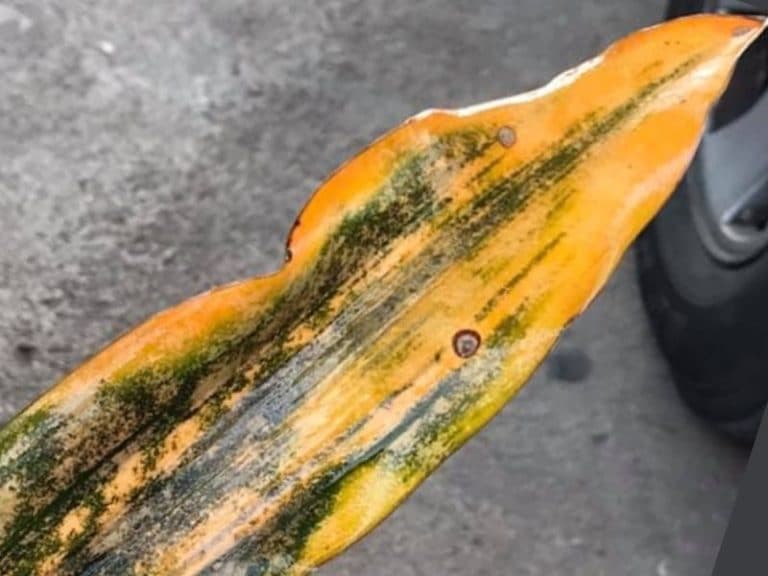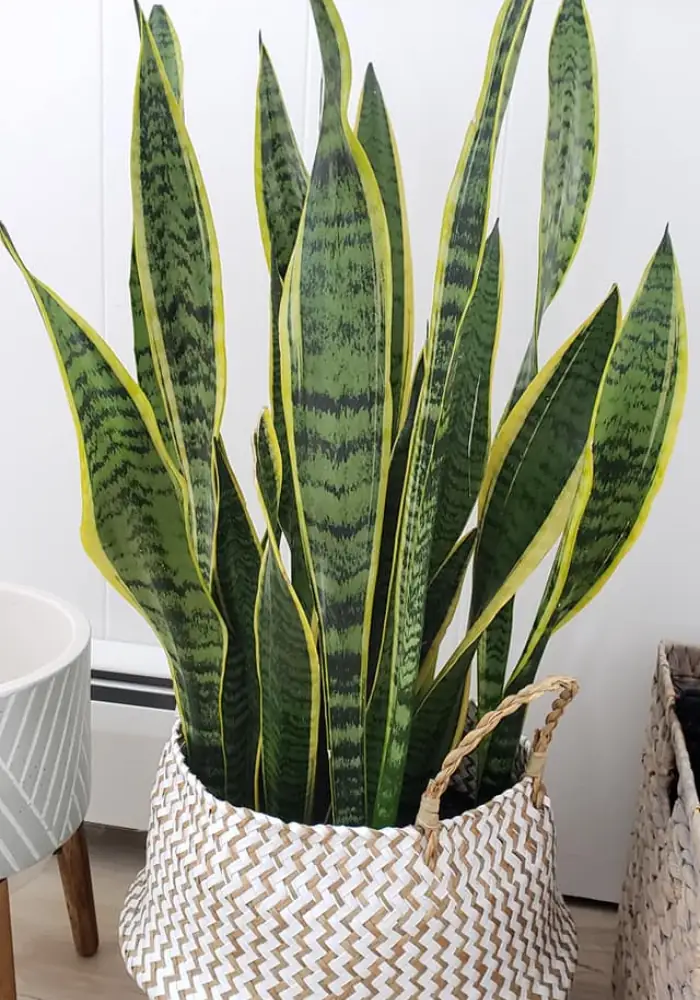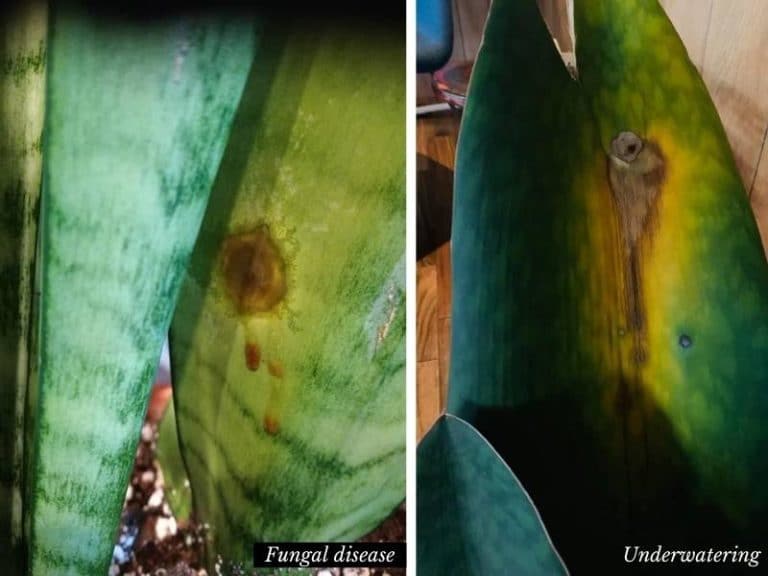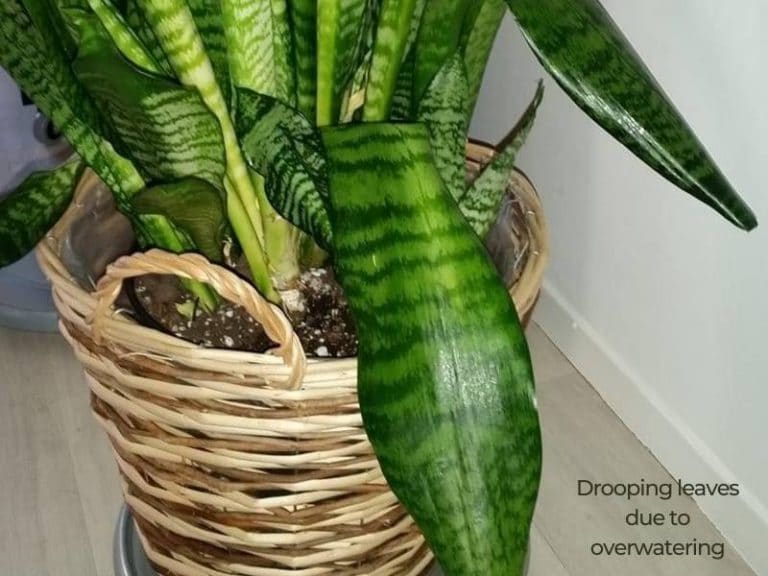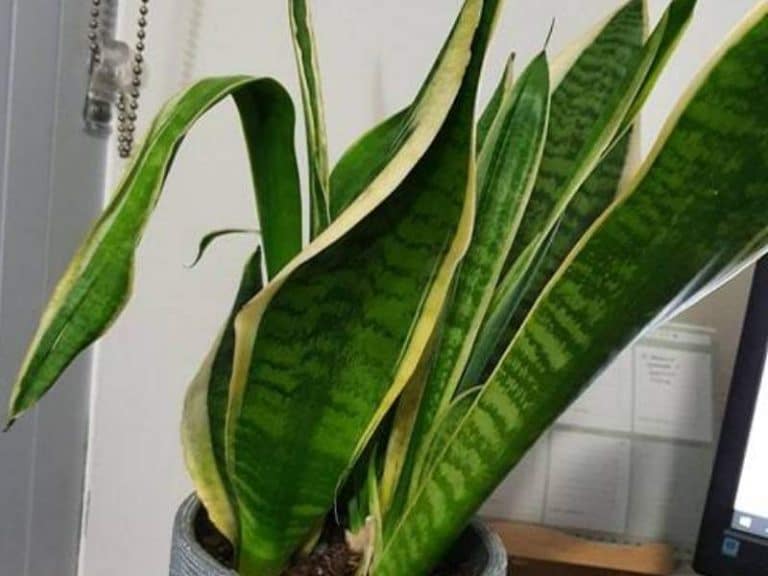Underwatered Snake Plant Signs + How to Revive It Quickly
Underwatering can lead to plant death if not fixed soon enough. Snake plants suffering from too much moisture quickly lose their beauty with leaves drooping and changing color. What are the signs of an underwatered snake plant and how do you revive the it?
An underwatered snake plant will have wrinkling and curling leaves with brown tips due to dehydration. The plant will start to fall over as it dries up and may die if left in dry soil for long. Move your snake plant to a shaded area and soak the pot in water to re-hydrate and revive it quickly.
Signs – How to Tell a Snake Plant is Underwatered

Without enough water, a sansevieria will lose its usual shape and even color. Underwatering interrupts the supply of nutrients throughout the plant since water helps plants remain upright.
Here are the signs of an underwatered snake plant:
Wrinkled Leaves
A wrinkled snake plant is a major sign that the plant is thirsty and probably suffering from prolonged lack of water. Wrinkles are lines that form on leaf surfaces. They can be long or small in size and often form different depths.
Wilting and wrinkling can get worse when the plant does not get enough water especially when indoor temperatures are high. The little moisture in their leaves is quickly lost to the environment, leading to drooping, curling, and shrinking.
Brown Tips
Brown tips and spots can be caused by different reasons, and lack of soil moisture is one of them. To provide enough nutrients to a plant, enough moisture is a must. With lack of water, the nutrients from the soil won’t be distributed evenly, resulting in some areas like the leaves tips changing their colour.
Unfortunately, you can’t reverse the snake plant’s brown tips to green as the effect is permanent. However, you can still revive the underwatered sansevieria if you save it before all the leaves dry out.
Leaves Turning Brown
If you notice your snake plants are brown and crunchy, it could be a sign, you’ve left them underwatered for a long time. As a result, the plants may not be receiving the essential nutrients and moisture, resulting in their foliage turning brown or almost brown.
Underwatering may also affect the roots, which may affect the general health of the plant.
Leaves falling down
When you leave your sansevieria underwatered for a long time leaves and even whole plants start falling over. The colourful leaves will start drooping and even appear dead.
The plant falling over means that a lot of moisture is lost, leaving the cells and tissues flaccid (having lost their turgidity and unable to support the plant’s upright posture).
The sub-watering phase also disrupts nutrient supply that can result in stunted growth.
Curling leaves
Another sign that tells you a snake plant needs water is curling leaves. Leaves folding, and curling in loops usually form an unpleasant view. Although it may indicate other problems, you shouldn’t rule out underwatering.
Remember: Water is not only important for photosynthesis but it’s also used in the translocation of nutrients and providing support. Water transports nutrients to all parts of the snake plant, and without it, they are bound to be unhealthy.
How to Save an Underwatered Snake Plant
You can save an underwatered snake plant by changing how you take care of it. But first, determine if the plant can be saved, or is beyond reviving. If the signs are severe – such as dry brown leaves, the plant is probably dead and may not revive even with watering. However, if some leaves are still green, there’s a chance you may revive the plant.
Here’s how to save an underwatered snake plant:
1. Move the plant to a shaded area
One of the first things you want to do is move the plant from a sunny spot to a shaded area. Too much direct sunlight is highly likely to be the cause excessive loss of moisture.
This will slow down the rate of water vapor loss and if the plant is not severely underwatered, it should start showing signs of recovery within 1-3 days, especially if there’s some moisture left in its root zone.
2. Soak the snake plant in water for 60 minutes
Snake plants require a generous soak to prevent wilting or curling of leave since they store water in the leaves to survive drought.
To fix severe underwatering, remove the plant from its pot and soak it in a basin of clean water to allow the roots to absorb as much water as needed. Soaking will also prevent leaves from losing extra moisture during this time.
You want to make sure the leaves are hydrated and that the cells are revived.
3. Change the potting soil
Change the potting mix with one that drains moderately such as the Rio Hamza Soil Mixture for Snake Plants to fix and prevent underwatering. If your potting medium has very little soil in it, it’s likely it does not retain moisture as required.
The leaves would still turn brown or yellow and droop even if the frequency of watering is correct yet the plant is sitting in a medium that drains water too fast.
Pro tip: Always check for compacted soil or roots that could block the drainage hole in the pot’s base and cause waterlogging and signs of overwatering in snake plants.
4. Cut off the badly affected leaves
Cut off the dead or extensively brown leaves at the base of the plant to avoid rot from spreading to other parts of the plants.
Wear gloves and use a sharp, sterile pruning knife while cutting to prevent any infection from occurring – just in case the plant is dying from root rot.
5. Mist the snake plant generously
Another great way to help your snake plant recover quickly from underwatering is to mist the leaves. Simply spray the leaves with water from a spray bottle to keep the leaves moist.
Misting can also help sansevieria plants recover from wilting, shrinking and wrinkling quickly. However, it should not be used as a remedy on its own. The major underlying problem should be fixed – say by watering the plants to keep its root zone moist.
6. Apply Fertilizer
CAUTION: Do not apply fertilizer to a dried-up snake plant. Fertilizer burn can worsen the underwatering signs and even kill the plant or make it impossible to save.
Provide your snake plant with fertilizer only after it recovers from the underwatering problem. Natural fertilizers are always the best as they improve the soil ability to store nutrients and water.
Don’t overfertilize as this may interfere with the pH of the soil, interfering with the nutrients supply.
Can Sansevieria Die from Underwatering?
Underwatering can affect a snake plant’s foliage and roots. Leaves wrinkle from lack of moisture and if left without water for long, the plant will dry up and die. Sanseveria are hardy plants and will not die easily unless neglected siting in dry soil for at least 30 days.
These plants are drought resistant and are well adapted to grow in arid climates, low humidity, and infrequent rainfall. However, when underwatering continues for a long time, sansevieria will bend over, limp, and die.
Underwatered vs Overwatered Sansevieria
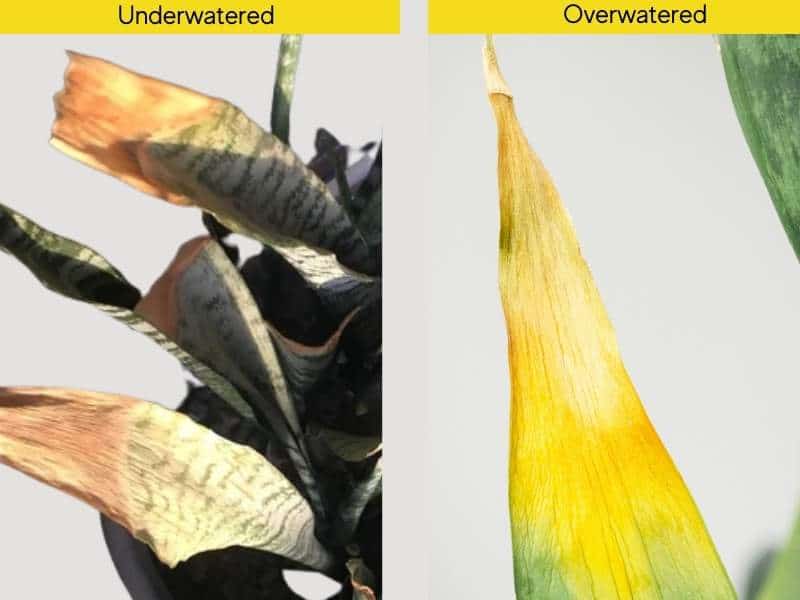
Overwatered and an underwatered sansevieria plants can show some similar signs. However, if the plant has both overwatered and underwatering symptoms, waterlogging is more likely to be the problem. Too much moisture is one of the main problems of sansevieria plants. Prolonged wet conditions usually cause severe damage and the effects may remain even after the soil becomes dry.
Some of the shared symptoms include brown leaf tips, wilting, dropping leaves, and wrinkling.
Here are the differences between overwatering and underwatering in snake plants:
| Underwatered snake plant | Overwatered snake plant |
| Wrinkled and dry eaves | Soft and mushy leaves |
| Brown edges affecting several leaves | New leaves develop brown dry tips |
| Soil is too dry. | Soil appears damp or too moist |
| Drooping leaves. | Curling and yellowing of snake plant leaves |
| Soil pulling away from the sides of the pot (shrinking potting mix). | Swelling potting mix due to water saturation. |
| Wilting that resolves after watering. | Wilting that doesn’t go away after watering. |
| Slow to no growth with small leaves. | Stunted growth. |
| Leaves curling inward. | Leaf edema on top of the leaves. |
| Brittle crisp stem. | Soft mushy stem. |
Both overwatering and underwatering are harmful to snake plants. Find a balance between the two for your plant to thrive.
How to Tell If a Snake Plant Needs Water
You can prevent underwatering your snake plant by adhering to a good watering schedule. Usually, this plant will require watering every time the soil becomes bone-dry. However, if you see the signs of drought discussed above, you might want to water the plant as soon as possible.
Here’s how to tell your sansevieria needs water:
Check the soil every week
Feeling the soil is the easiest and reliable way to tell that the snake plant needs water. Stick your hand 2-3 inches deep, and if it’s dry, the plant could probably be needing water.
Alternatively, you can use an unfinished chopstick and dip it into the soil. If the stick comes out dry with no soil stuck to it, it’s the perfect time for watering. If the soil sticks or darkens on the stick, wait for a little bit before watering.
Stagnant growth
A sluggish growing plant could be an indication you are underwatering your snake plant. The growth is always slower than expected, and new growth like new leaves may be unnoticeable.
A dry potting soil
Although drought-tolerant, water your plant from time to time. The soil should be dry in between watering periods but shouldn’t remain dry over long periods. When the potting soil is too dry, it could indicate the snake plant needs some water.
Soil weight and color
A plant with wet soils weighs more than dry soil. To check the weight, pick the plant and feel the weight. Damp soil usually is darker than dry soil.
Tips to Prevent Underwatering for Snake Plants
If underwatering is a recurring problem, it is best to apply the right care program to fix and prevent it. If you travel for weeks on end leaving behind your plant, try using 14-day watering spikes to keep the plant hydrated for at least 2 weeks and prevent underwatering.
Here are more tips to prevent underwatering snake plants:
Use the Right Potting Size
Go for oversized pots or containers with a drainage hole fitted at the bottom. Terra cotta pots are great for snake plants as they contain drying properties, ensuring the soil dries faster, unlike the usual dry pots.
A well–draining potting mix is ideal for the snake plant. You can also use potting mix suitable for succulents and cacti.
Have a proper watering schedule
Schedule a day at least once every week when you will be tending your plant’s water needs. Make a calendar reminder if you have a history of forgetting to water. A warmer temperature, drier air, or brighter light calls for more watering. Also, soil in terracotta pots dries out faster than soil in glazed or plastic pots.
Water only when the soil is dry. Keep tabs every time you are watering to know when the soil dries. Additionally, adjust the schedules depending on the season. For example, during winter, water once every 1-2 months.
Place the plant where there’s indirect light
The environment you provide and the place you put your snake plant matter. Place the plant in a well-lit area as they prefer indirect light. A brightly well-lit area near a window is a perfect place. Shady places may be suitable, but the plants will grow slower than usual. Snake plant prefers warm spots with temperatures above 10 degrees and low humidity to thrive perfectly.
Water properly
Don’t water too frequently. Instead, leave the soil to dry out before watering. If possible, water from the bottom of the pot. In areas with high temperatures, these plants lose a lot of water through transpiration. You’ll have to water your snake plant more in warmer temperatures and less in lower temperatures.
Also, water with a generous soak. Watering too lightly will only infiltrate the topsoil, and the water won’t penetrate into the roots. Deep watering ensures that the excess water trickles through drainage holes. It’s an excellent way of telling the snake plant has received sufficient water.
Knowing underwatered snake plant signs and understanding how to revive it is what you need to give your plant a second chance to live. A little caring goes a long way.


